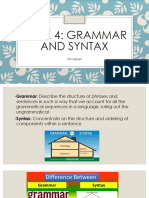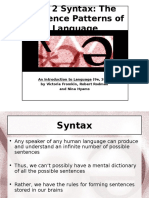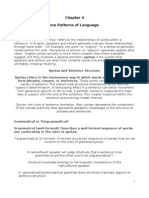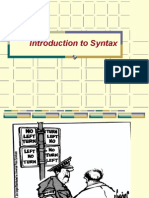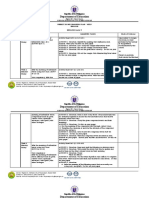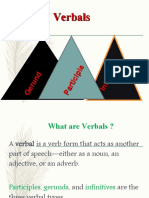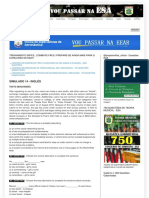0% found this document useful (0 votes)
52 views7 pagesConstituency and Dependency in Syntax
The document discusses two main approaches to syntax: constituency (phrase structure grammar) and dependency (dependency grammar), highlighting their differences in analyzing sentence structure. It also covers Transformational Grammar, which explains how deep structures are transformed into surface structures, and introduces phrase trees as visual representations of syntactic structure. Key concepts include hierarchical organization, head-dependent relationships, and the applications of these theories in linguistics and computational linguistics.
Uploaded by
oryoniroCopyright
© © All Rights Reserved
We take content rights seriously. If you suspect this is your content, claim it here.
Available Formats
Download as PDF, TXT or read online on Scribd
0% found this document useful (0 votes)
52 views7 pagesConstituency and Dependency in Syntax
The document discusses two main approaches to syntax: constituency (phrase structure grammar) and dependency (dependency grammar), highlighting their differences in analyzing sentence structure. It also covers Transformational Grammar, which explains how deep structures are transformed into surface structures, and introduces phrase trees as visual representations of syntactic structure. Key concepts include hierarchical organization, head-dependent relationships, and the applications of these theories in linguistics and computational linguistics.
Uploaded by
oryoniroCopyright
© © All Rights Reserved
We take content rights seriously. If you suspect this is your content, claim it here.
Available Formats
Download as PDF, TXT or read online on Scribd
/ 7



